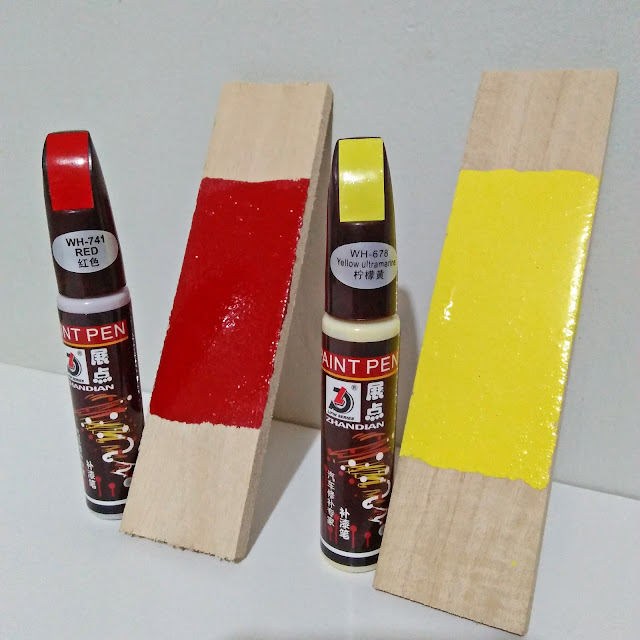Warning Out on Toxic Paint Pens
The toxics watchdog group EcoWaste Coalition has warned consumers against buying and using paint pens with lead content in excess of the country’s regulatory limit.
Paint pens are paint-containing markers used on fabric, glass, metal, paper, plastic, wood and other surfaces. Some paint pens are especially marketed for fixing car scratches.
“The handy paint pen that you bought from Divisoria or from an online seller to cover up dents or touch up scratches on your bicycle, car, appliances or your child's favorite toy may contain lead, a hazardous brain-harming chemical that is banned in paint products,” said Manny Calonzo, Adviser, EcoWaste Coalition.
The group issued the lead-based paint hazard warning after obtaining the test results for two variants of Zhandian Paint Pen, which the group purchased from a vendor at 999 Shopping Mall for P40/piece.
According to the lead paint analysis performed by SGS, a global testing company, the ultramarine yellow Zhandian Paint Paint had 82,100 parts per million (ppm) lead, while the red variant had 19,100 ppm.
On the other hand, lead was not detected on the black, gold and white variants of the said paint pen based on the chemical screening conducted by the EcoWaste Coalition using an X-Ray Fluorescence (XRF) device.
“The non-detection of lead on the other variants of the Zhandian Paint Pen is concrete proof that paints can be manufactured without lead additives,” Calonzo added.
The maximum limit for lead in paint or surface coatings is 90 ppm as per DENR Administrative Order 2013-24, or the Chemical Control Order for Lead and Lead Compounds.
A cumulative toxicant affecting the brain, the central nervous system and other body systems, lead is listed among the “10 chemicals of major public health concern” as identified by the World Health Organization (WHO).
As said by the WHO, “as lead painted objects start to decay, the paint often fragments into flakes and dust that contaminate the home environment. Paint flakes and dust are readily swallowed by young children, who typically play on the ground and frequently put their hands to their mouths. Some children compulsively pick flakes of paint off surfaces and eat them.”
According to WHO: “Lead exposure can cause chronic and debilitating health impacts in all age groups, but it is particularly harmful to young children. This is because the developing nervous system is vulnerable to the toxic effects of lead, even at levels of exposure that do not cause obvious symptoms and signs. Lead exposure in early childhood can result in reduced cognitive abilities, dyslexia, attention deficit disorder and antisocial behavior.”
“Lead exposure can also cause anaemia, hypertension, renal impairment, immunotoxicity and toxicity to the reproductive organs,” it further warned.






Comments